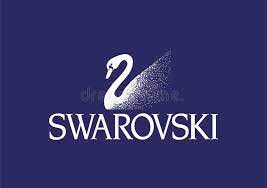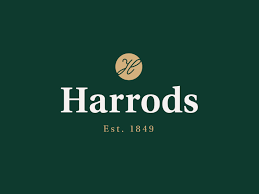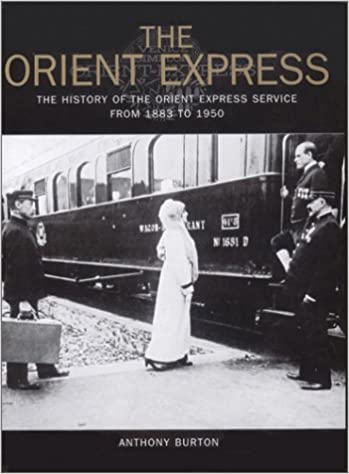What was the history of the Orient Express?
Since 1883, Paris and Istanbul have been linked by a legendary railway. During the Belle Époque, its luxurious carriages were the scene of select feasts, clandestine love affairs and all sorts of diplomatic intrigues. The original route of the Orient Express, which crossed France and the Central Powers, was interrupted with the Great War. Then everything changed. The Orient Express was a long-distance passenger train service created in 1883 by the Belgian company Compagnie Internationale des Wagons-Lits (CIWL) that operated until 2009.

The start of the Orient Express
On the afternoon of October 4, 1883, Parisians crowded into the Gare de l’Est in Paris, on the boulevard de Strasbourg, to watch the most luxurious and comfortable train Europe had ever seen depart. He was going to leave Paris for what was then Constantinople (today Istanbul) on a 77-hour and 35-minute trip, and the press had already dubbed it “the new magic carpet to the East.” At six o’clock, “En voiture, messieurs, s’il vous plaît” was heard in a solemn voice and the first passengers excitedly boarded that train that offered a luxury never seen before on rails. Also endless novelties: the Orient Express was, in fact, the first train in Europe with sleeping cars and dining cars.
The idea of a railway linking Europe from west to east had been born from the initiative of the Belgian engineer Georges Nagelmackers (1845-1905), founder in 1876 of the Compagnie Internationale des Wagons Lits (CIWL). It was not an easy road. Nor had the founding of the Compagnie been, given the manifest rivalry between Nagelmackers’ project and the one developed by the American George Mortimer Pullman. The latter, inspired by the ships that crossed Lake Erie -through which the border between the United States and Canada ran-, had created the “sleeper car” or Pullman wagon. His wagons had become famous in 1865, when they moved the body of assassinated President Abraham Lincoln from Washington to Springfield, where he was buried, and given the popularity of his invention, Pullman intended to move it to Europe…
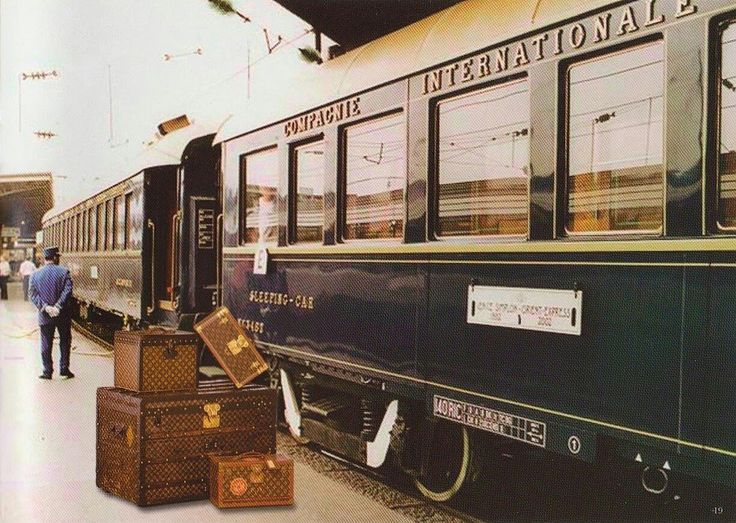
The Pullman company inspired the Orient Express?
A controversial project Nagelmackers had learned about Pullman wagons during a trip to the United States, and, despite the American’s reluctance, on his return to the Old Continent he managed to found the Compagnie Internationale des Wagons Lits. By then, most of the European countries were already connected by rail. The construction of railway arteries had been a prosperous business and its owners viewed any innovation that affected them with some misgivings, despite the fact that transportation conditions were still not very comfortable for travelers.
How was the political situation in the days of the Orient Express?
The delicate political situation in Europe caused the mistrust of governments when it came to facilitating rail communications between one country and another. The enthusiasm of Nagelmackers ran into, therefore, with the resistance of the big railway companies and with political events that, like the Franco-Prussian war of 1870, made his plans difficult. It was precisely at the end of this last conflict that Georges Nagelmackers was able to resume his project thanks to the support of King Leopold II of Belgium.
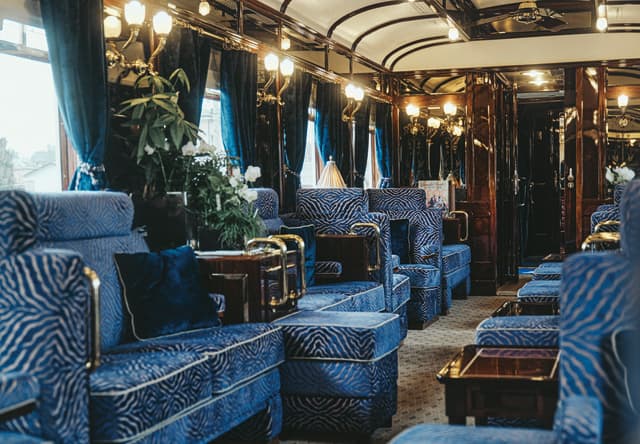
The monarch, better financier than politician, knew how to glimpse the business possibilities of the idea of Nagelmackers, who, through his mediation, obtained the relevant contracts with the railway administrations in France, Germany and Austria for the exploitation of what would be his ship badge. Thus, in 1872 he put into operation the railway that would link Paris and Vienna, and that, eleven years later, would reach Istanbul. By then, the Compagnie was already providing catering and accommodation services in different European railway administrations through its own sleeping cars, lounge cars and restaurant cars. After the creation of the Orient Express, the company changed its name to the International Company of Sleeping Cars and the Great European Express.
How was the Maiden Voyage of the Orient Express?
The inaugural voyage was carried out with great splendor and in the presence of the authorities of the political, diplomatic and financial world of Paris. The train consisted of three carriages, two sleeping cars and a dining car, plus two baggage cars. Each carriage measured 17.5 meters and was constructed of teak wood, provided with steam heating and lit by gaslight.
The travelers in this first convoy were armed with pistols for their defense, given the difficult situation already in the Balkans. Among them were two people whose testimonies are invaluable for gaining first-hand insight into the atmosphere on the recently opened express: Edmond About, a correspondent for Le Figaro, and Henry Opper de Blowitz, who held the same position for The Times of London. Both have left detailed chronicles in which the magnificence of the mythical train is described. Blowitz, for example, did not hesitate to write that “he marveled at the whiteness of the tablecloths and napkins. The sparkle of glassware, the rubies of red wine, the topazes of white wine. The crystalline transparency of water in decanters, and the silvery caps of champagne bottles.
About, for his part, put lyricism aside to compare the comfort of his compartment with a garçonnière worthy of the pen of Guy de Maupassant while being pleasantly surprised by the fact that “every day the sheets are changed, a refinement unknown even in the richest mansions.
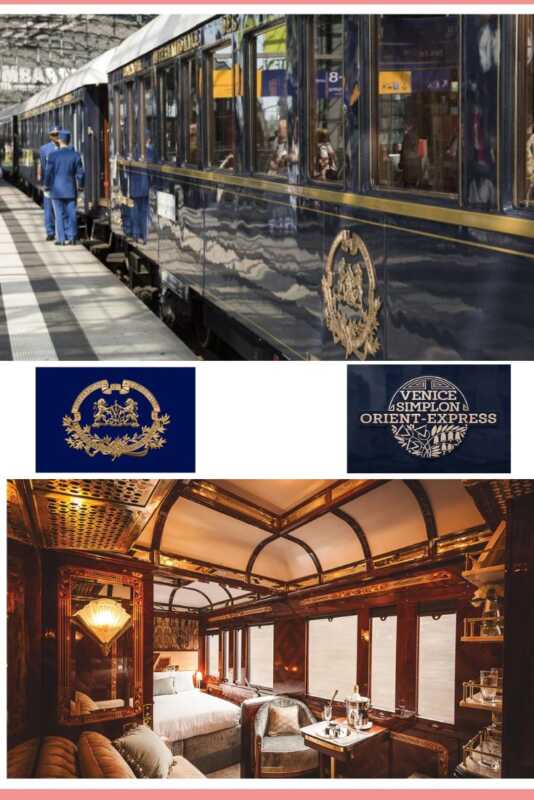
How was the decoration of the Orient Express?
The decoration of the Orient Express was exquisite, typical of the sophistication of the Belle Époque, and was inspired by the best hotels in the world: the ceilings were embossed leather; the lamps came from the factory of Émile Gallé, the art nouveau glazier par excellence; the curtains were velvet, the furniture mahogany, silver cutlery, and brass faucets.
All the apartments had a private bathroom and it was not uncommon to discover the occasional Gobelin tapestry or glasses, bottles and vases created in the workshops of René Lalique, the most famous glassmaker of the time. He also contributed to the decoration of the Orient Express with the design and realization of glass panels framed in exotic woods and decorated with figures of nymphs dancing among vines, and others with floral motifs on a silver background that decorated the walls of the coach,
There were large panels of rich teak and mahogany wood embossed with René Droy marquetry, Lalique crystal decorations, reddish-brown armchairs of Spanish leather goods, Turkish rugs, and silk drapes.
There was a wagon-salon-restaurant, a smoking room with soft sofas and a well-stocked bookcase, and also a kind of boudoir or petit salon pour les dames, decorated with Louis XV armchairs, a chaise longue, small tables and tapestries on the walls. walls reproducing Watteau’s fêtes galantes.
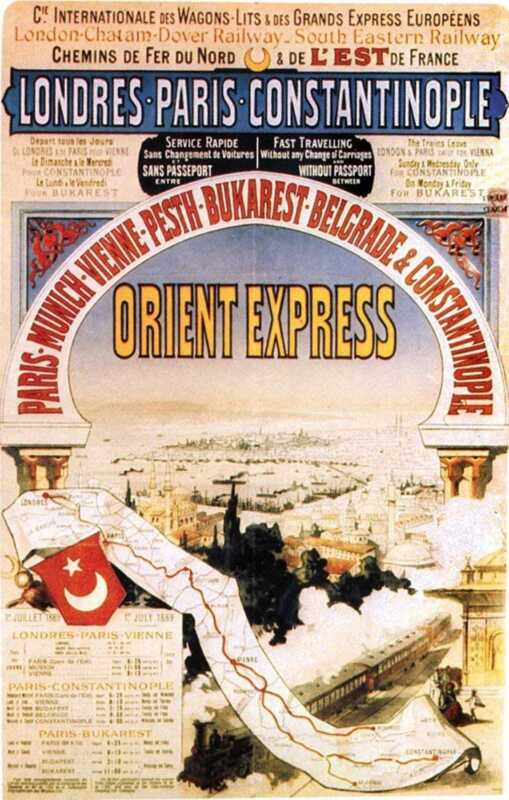
As was the refined cuisine service of the Orient Express?
Dinner was served at quarter past eight and diners enjoyed white damask tablecloths, crystal Baccarat goblets and solid silver cutlery. The menu included ten dishes—the norm at that time for a grand gala feast and the travelers needed three hours to taste them.
Apart from the initial soup, there were hors d’ouvre consisting of oysters, caviar and lobster, then turbot with green sauce, the game chaudfroid, a chicken à la chasseur and, to top it off, a large dessert buffet, sorbets, cheese and last but not least, fresh fruit.
The excellent cuisine that could be enjoyed on the Orient Express was another of the attractions of the train. The fare on the menu was in keeping with the luxury of the Orient Express: dinner was six francs, lunch four francs, and half a bottle of Moët & Chandon, to take an example from the wine list, seven francs. For comparison, the daily wage in French coal mining was 3.80 francs.
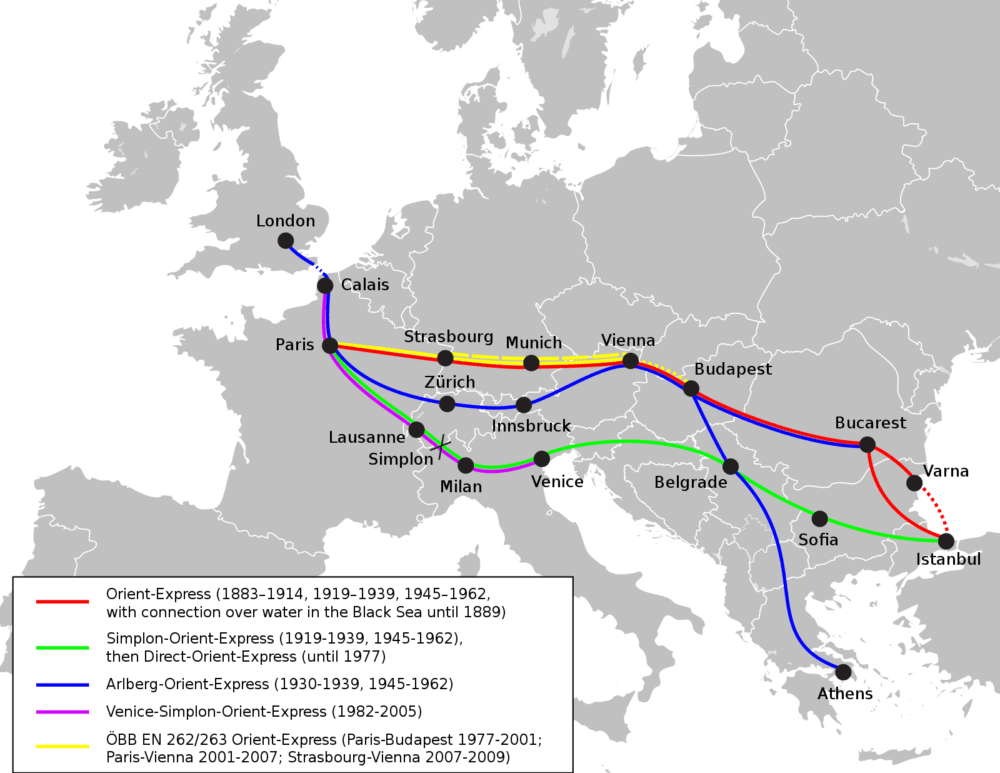
What was the menu on the Orient Express?
The menu, written in French and German, abounded in delicacies such as the best cheeses in France, foie gras micuit, roast beef, caviar and soufflé flambé. Take the dinner menu on the opening day as an example of what could usually be served at the restaurant: oysters, soup with Italian pasta, turbot in green sauce, chicken à la chasseur, beef tenderloin, venison semifreddo, salad, chocolate pudding and various pastries. All washed down with the best Bordeaux and Burgundy wines and also French champagne. For greater refinement, as the train progressed the menu varied in accordance with the gastronomy of the area it crossed. Such was the fame of its cuisine that it is said that there were travelers who, moved by their status as gourmets, they took the train only for an intermediate journey to taste their delicious table.
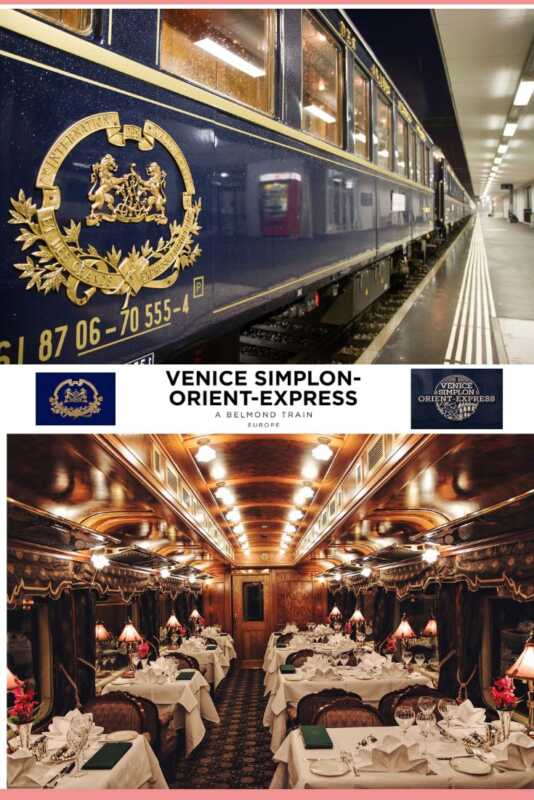
What was the original route of the Orient Express?
At the time of its inauguration, the train left twice a week from the Gare du Est, then called the Strasbourg Station, in Paris, ending in the Romanian city of Giurgiu, passing through Strasbourg, Munich, Vienna, Budapest and Bucharest. In Giurgiu, passengers crossed the Danube by ferry to neighboring Ruse in Bulgaria. From there, another train took them to Varna to take a ferry to Istanbul. In total, the first trip of the Orient Express took 81 and a half hours to cross Europe. The journey concluded with a splendid reception organized at the Topkapi Palace by Sultan Abul Hamid II, after which the travelers returned to Paris, where they arrived on October 16. A journey that covered more than 1,700 Miles
Six years later, the necessary sections of track were completed, which allowed the two ends of the line to be linked with the same train, which shortly after was renamed with the final name of Orient Express. The route operated three times a week, making stops in three capitals: Budapest, Belgrade and Sofia, a service that operated regularly until the outbreak of the First World War, which forced the suspension of almost all trains.
In 1919 normality returned with an important novelty in the layout: the opening of the Simplon tunnel, which linked Switzerland with Italy, allowing the train to follow a new route to the south, through Milan and Venice; a technical novelty so modern that the name of this infrastructure ended up being incorporated into the official name of the train: Venice-Simplon Orient Express.
No where to stay in istanbul
In the period between the world wars, Arriving in ancient Constantinople by rail, travelers did not have accommodation that lived up to their expectations. The suggestions were seen as expanding the business and Nagelmakers ended up signing Alexandre Vallaury, a Franco-Ottoman architect, as a consultant. After searching for possible locations, he built the Pera Palace Hotel in the Tepebaşı area, a hill overlooking the Golden Horn, a water spout that juts into the city and which, thanks to its tone of light during sunsets, earned it that name. .
In the early days of the Pera’s operation, passengers arrived at Sirkeci Gari, the terminus of the line, and after a short walk, connected with a maritime ferry to the other side of the city where some palanquins, chairs for one or two people that the porters carried by hand to climb the hill, a singular means of transport that was later replaced by horse-drawn carriages.
Orient Express Prints on ETSY
How was the etiquette on the Orient Express?
For dinner, a tuxedo or tailcoat was required for gentlemen, and an evening dress for ladies. What’s more, the travelers had service on board and the day compartments, once the beds were collected, were converted into comfortable lounges where other passengers could be received, read, play cards or have tea. a rigid protocol in the way of dressing and behaving.
On his return to Paris, Edmond About wrote on the pages of his diary: «Until now, when you had days off and wanted to travel, you went to Fontainebleau or the ports of the English Channel. Today you can travel to Istanbul. The Orient Express was a true innovation in the ways and forms of life of a high social class, and sophistication.
When on June 1, 1889 the Orient Express made its first journey without transfers, in 67 hours and 35 minutes, the train became an object of desire for the great personalities of the time and for anyone who wanted to be considered in society. of his time. Little by little, the express became much more than a means of transportation. Businesses were carried out here, parties were organized, people traveled incognito, clandestine lovers hid, and they lived as if they were in the most glamorous of hotels.
Which Kings Traveled on the Orient Express?
Among its illustrious passengers on the Orient Express were Edward VII of England, still Prince of Wales, and Emperor Franz Joseph of Austria, who traveled more than once in his wagons to his Balkan territories. Leopold II of Belgium also frequented the Orient Express, always in the company of his multiple lovers, including the dancer Cléo de Mérode, and Ferdinand I of Bulgaria, although he did so for very different reasons than his Belgian counterpart. The Bulgarian monarch was passionate about the railway. So much so that on more than one occasion he got on the machine to drive the convoy himself, as long as it was within the borders of his kingdom. The European nobility was delighted with the Orient Express.
Over the years, monarchs and aristocrats were followed by politicians; adventurers like Thomas Edward Lawrence, better known as Lawrence of Arabia, or show business figures like the creator of the Ballets Russes, Serge Diaghilev; the dancers Nijinsky or Ana Pavlova; the dancer and spy Mata Hari or, late in the 20th century, the actresses Marlene Dietrich and Greta Garbo or the eminent soprano Maria Callas. So many were the personalities that the Orient Express brought to Istanbul that to accommodate them the sumptuous Pera Palace hotel was opened in 1895, which dominated the entire Golden Horn and which was directly accessed from Sirkeci Station by carriages intended for travelers.
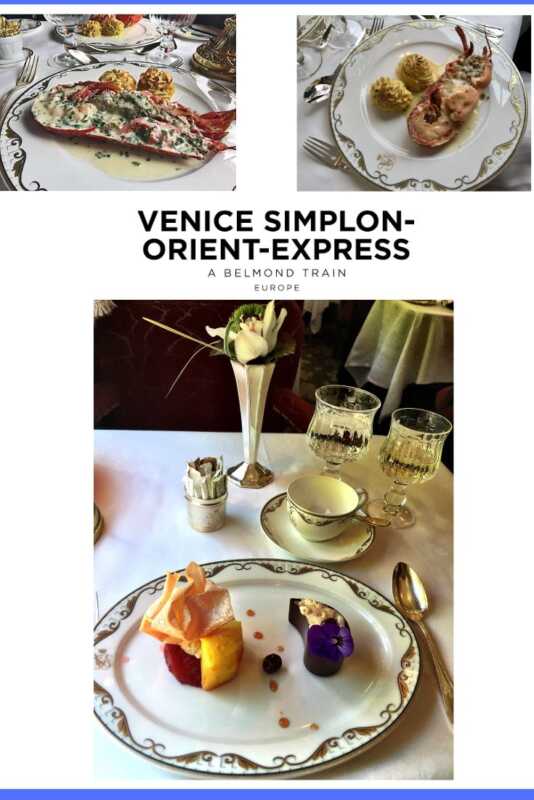
The sexual scandals of Leopold II of Belgium were famous, who traveled to Istanbul to see the Turkish harems and, along the way, tried to conquer the French dancer Cléo de Mérode, one of the most acclaimed of the Belle Époque, model of the photographer Nadar and immortalized by Degas as one of his dancers.
The paranoia of Fernando de Bulgaria, who locked himself in the bathroom at night because he was afraid of being murdered, was also known. But once dawn came he had no problem blending in with the train passengers. In fact neither with the crew. What’s more, he came to drive the train himself and at an alarming speed. His son, King Boris III, is believed to have been assassinated on the Orient Express in 1943
The Tsar of Russia Nicholas II, although always exquisite, refused to use the carriages of the rest of the passengers and insisted that they build one especially for him.
Other Famous Travelers
It wasn’t all royalty, of course. Trotsky and Tolstoy were also passengers featured eros. The most famous arms dealer of all time, Basil Zaharoff, nicknamed the merchant of death, was a regular and always insisted on going in compartment number seven. Fictional characters also enjoyed the luxury: from Hercule Poirot to James Bond. then we arrived
And spies deserve a separate chapter: Mata Hari was a frequent traveler and it is said that a prominent English spy, Robert Baden-Powell, once posed as an expert on butterflies. In order for his alibi to be credible, he spent the entire journey drawing butterflies, although what he put on their wings were codes for towers and defenses that he observed on the Dalmatic coast and which, later, served as defense points for the British army in the First World War. World War.
The Austrian writer Stefan Zweig also sensed that the Great War was near when, aboard the Orient Express, he saw another nilitary train go by in the opposite direction, loaded with cannons. That was the inspiration to write The World of Yesterday.
Did the Orient Express have incidents?
Despite the multiple comforts and the great technical advances that the Orient Express enjoyed, there was no shortage of unforeseen events. The inclement weather, for example, blocked the convoy on more than one occasion, subjected to temperatures so rigorous that they forced the travelers to sleep clothed and forced the crew members to travel several kilometers over the snow in order to be able to supply the kitchens.
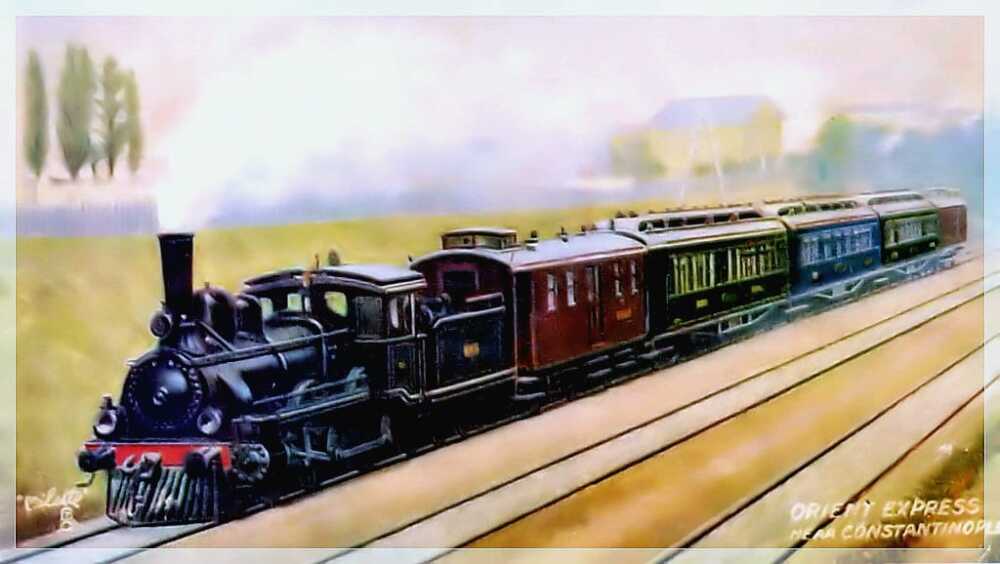
It also suffered several derailments. Among them, the one that occurred in 1906 in the vicinity of Budapest, which had a witness to narrate it, the Spanish writer Vicente Blasco Ibáñez, who was at that time in the restaurant car: «When I looked around me, I did not recognize the dining room. Everything broken, everything demolished, as if a cannon shell had passed through it. Bodies on the floor, fallen tables, torn tablecloths, dripping liquids, it is not clear what is coffee, what is liquor, and what is blood, shattered dishes and all the glass in the car, the thick glass broken into sheets sharp, scattered like transparent sword blades,” the author wrote.
With so much historical ups and downs and notable characters, it is not surprising that anecdotes abound. The most incredible took place one night in 1920, when a man in pajamas appeared near a station in Montargis claiming that he was the president of France, Paul Deschanel, and that he had fallen off the train. “And I am Napoleon Bonaparte,” the station attendant laughed, thinking that he was a madman. The problem was that this mysterious man really was the president of France. It seems that after having ingested several sleeping pills, he fell out of a window of the Orient Express. He was found wandering around in his pajamas by a silversmith, who accompanied him to the nearest station manager’s post..
How was London connected to the Orient Express?
London was connected to the Simplon route. To do this, travelers took a train to Dover, where they embarked on a ferry that took a series of wagons to Calais; from there they continued by rail to Paris, and joined the main convoy at the Gare de l’Est. A third route was opened (Arlberg Orient Express) which, always from Paris, crossed Europe via Zurich, Innsbruck and Budapest, with some extensions that continued to Bucharest and Athens. This multiplicity of lines led to a substantial renovation of the train, which included precious wood furniture and silver cutlery from the Italian factory Cesa 1882, considered the best in the world.

How did WWI affect the Orient Express?
Barely thirty years had passed since its inauguration when the outbreak of the First World War cut off rail service. During the conflict, the Orient Express stopped operating and service did not resume until 1918. The opening of the Simplon tunnel, which linked Switzerland with Italy, made it possible the following year to create an alternative route, the Simplon Orient Express, which , from Paris, it passed through Lausanne, Milan, Venice and Trieste, to connect with the original route in Belgrade. With this, the passage through Germany was avoided, due to the misgivings of the allied powers towards their defeated adversary.
How did WWII affect the Orient Express?
The second world war forced to interrupt the service again. After the end of the conflict, the border between Yugoslavia and Greece was not opened until 1951, and between 1952 and 1953 the pass between Bulgaria and Turkey was closed, preventing the train from reaching Istanbul during that period. At the end of the 20th century, with the fall of the Iron Curtain, the satellite countries of the USSR changed the original wagons for their own versions, which reduced the quality of the facilities.
The express no longer enjoyed the mythical halo of the past, nor was its passage the same. Plane travel made European journeys shorter and cheaper. passengers reflect bitterly on the human condition. Anguish has happened to our frivolity, perhaps excessive. The Cold War prevented the passage through the countries where communism ruled. The service languished until its suppression on May 19, 1977, when the last Orient Express to Istanbul started from the Gare de Lyon, Paris.
Samsung Store: Galaxy Z Fold4
In 1977, the Orient Express stopped operating in Istanbul. Its immediate successor, a direct overnight service from Paris to Bucharest, was later reduced in 1991 to Budapest, and in 2001 reduced again to Vienna, before leaving Paris for the last time on Friday 8 June 2007. Following this , the route, still called the Orient Express, was shortened to start from Strasbourg, occasioned by the inauguration of the LGV Est which allowed much shorter journey times from Paris to Strasbourg. The new reduced service left Strasbourg at 22:20 every day, shortly after the arrival of a TGV from Paris, and was attached in Karlsruhe to the overnight service from Amsterdam to Vienna. On December 14, 2009, the Orient Express ceased operations and the route disappeared from European rail timetables, reportedly “a victim of high-speed trains and cut-fare airlines”.
After 1977 the Train was dismembered and sold for parts. Some wagons ended up in residential gardens and others were turned into hotels in remote towns. In Spain, some wagons were used on the Madrid-Cádiz line, although nothing remained of its past splendor.
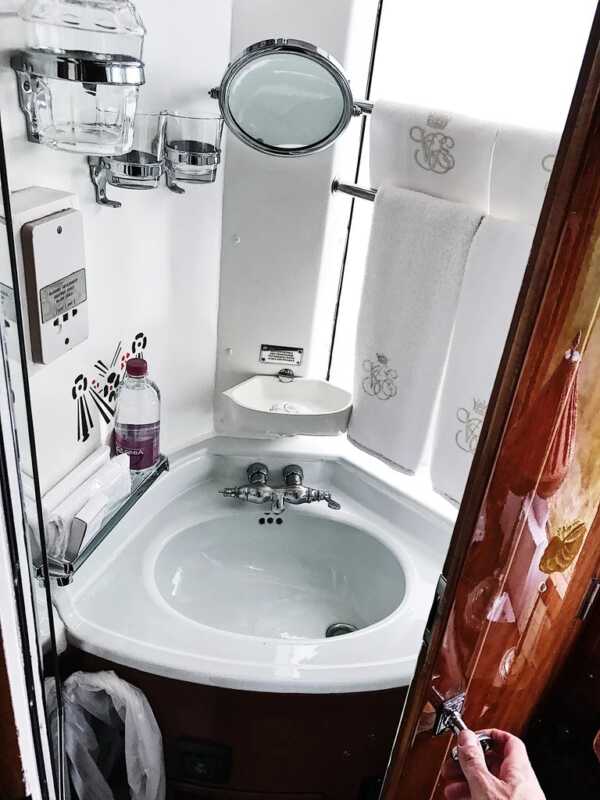
The Venice-Simplon Orient Express train, a private Belmond company using original CIWL carriages from the 1920s and 1930s, continues to run to and from various destinations in Europe, including the original London to Istanbul route. There are new shorter routes: one from Amsterdam to Venice, with stops in Brussels and Paris; another from Rome to Paris via Florence; and a third from Geneva to Venice through the Alps. Itineraries and prices can be consulted on the Belmont Official Website
How is the orient express today?
Today there are Three different trains dispute the name Orient Express and soon two hotels will open in Italy under this brand
At the moment, there are three different trains that carry this legendary and evocative name and two hotels will soon open in Italy under this brand, undoubtedly one of the best positioned names in the world of luxury. All three are unique but different, one is the Simplon Orient Express, the next is the Orient Express La dolce vita and the third is the Orient Express owned by SNCF
Orient Express Amazon Prints online
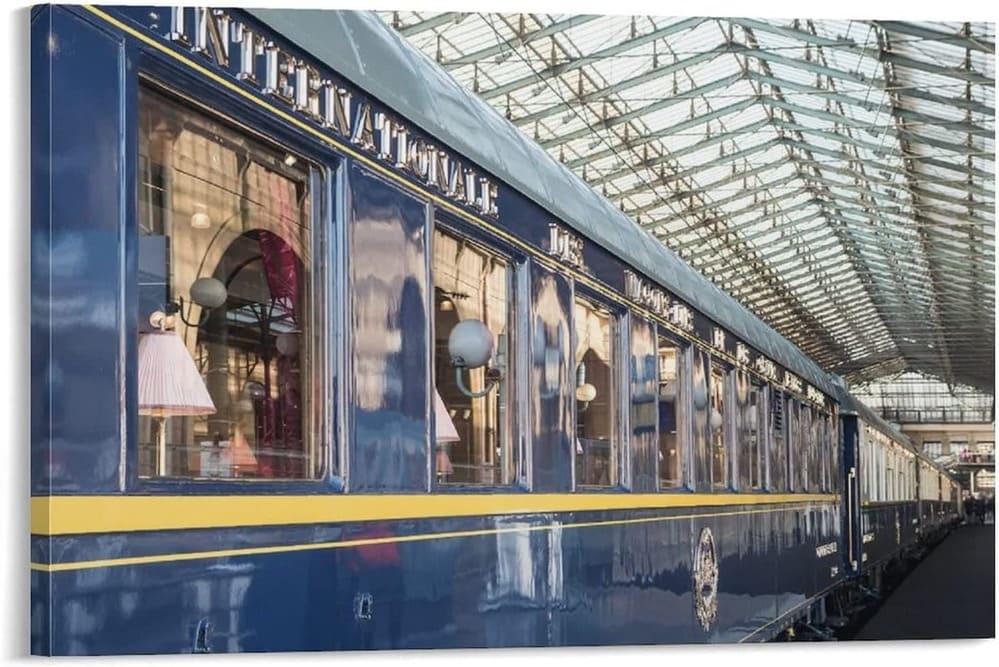
To understand this story we start from the beginning.
140 years ago the Belgian businessman Georges Nagelmackers, on a trip to the United States, came into contact with George Pullman. He decided to bring to Europe the idea of running trains with sleeping cars and a dining car and founded the Compagnie Internationale des Wagons-Lits. His most luxurious project will come to light in October 1883 in Paris, just now 140 years ago, with the launch of the Express d’Orient, on a first route that linked the French capital with Constantinople and which in 1891 was renamed Orient Express.
The history of the Orient Express runs parallel to the turbulent history of Europe. Upon returning from the United States, Nagelmackers took years to put his idea into motion because of the Franco-Prussian War. The Great War interrupted their services for 4 years. A curious fact: at the end of the war, their routes are modified by the Treaty of Versailles itself, which prevents the train from passing through Germany. Since then, part of its routes will cross the Simplon tunnel, which connects Italy with Switzerland, and incorporates that name. It is renamed Simplon Orient Express.
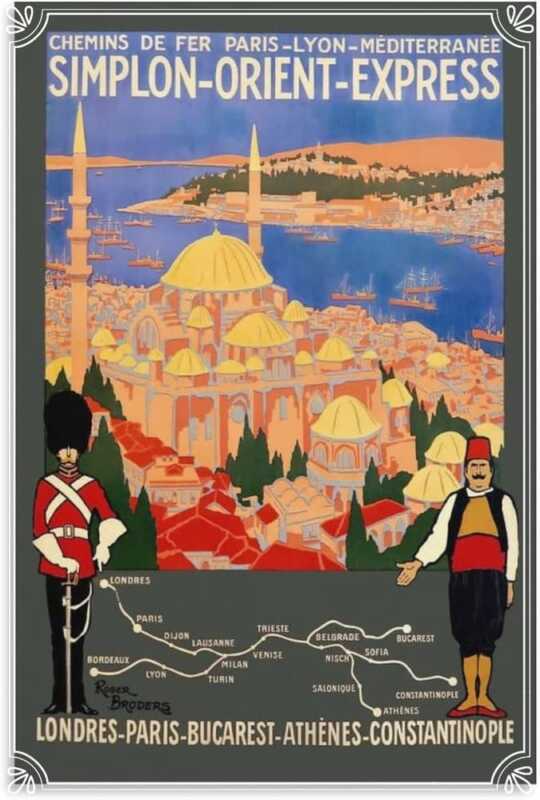
His best years will be lived in the decades of the 20s and 30s, it is the golden age of train travel. In 1939 all services were interrupted again, which were partially resumed in 1945. But like Europe itself, nothing will ever be the same again. The favorite train of the great lady of crime falls into decline, languishes, loses its glamor and ends up dying before the unstoppable boom of the plane.
James Sherwood buys the Orient Express
The American businessman James Sherwood, in 1977, acquired at an auction in Monte Carlo, two original wagons of the mythical train, by then half dilapidated and scattered throughout Europe in lamentable conditions. A year earlier he had bought the legendary Cipriani Hotel in Venice, of which he was a regular customer. He decides to embark on a project that ends in resounding success and buys and restores wagons that he finds here and there, many of them in Spain. Over time he is adding famous hotels to his collection which he calls by the same name, Orient Express. He buys legendary hotels like Villa San Michele, Splendido, Copacaba Palace or the delicious La Residencia de Deiá.

Sherwood, who died in the middle of a pandemic in London, bought the carriages and revived the myth, never got his hands on a crucial element of this board: the Orient-Express name. That fly is in the hands of SNCF, the French state railway company. The train and hotel company paid a considerable amount annually for the use of such a legendary name until SNCF was no longer interested in renewing such a sought-after license.
Belmond is now Orient Express
Orient Express Hotels changed its name to Belmond but retained the right to use it for the famous train, whose exact name is the Venice Simplon-Orient Express. The Belmont company began to have financial problems and rumors began about a possible purchase. In December 2018, the czar of European luxury, Belmond, is not going through his best moment and is bought by none other than the king of European luxury, Bernard Arnault, founder of LVMH, announces his acquisition. The formidable economic injection under this umbrella begins to translate into major renovations of its iconic hotels, in the inauguration of a super luxurious category of new carriages for the Venice Simplon Orient Express
SNCF, Accor and the Orient Express
It was not until 2016 that some wagons were recovered. A few were found on the border between Poland and Belarus and were taken by road to Clermont-Ferrand to be restored. In 2019 they were exhibited at the Gare de l’Est, in an exhibition that gave an account of what that train had meant, which aroused the imagination of artists, filmmakers, writers, and politicians alike. The Orient Express wagons recovered from Polonis and Belarus, were restored under the orders of the architect Maxime d’Angeac. 17 original wagons from the 20s and 30s, the best days of the mythical train. Full note of the find and restoration
SNCF once recovered the mythical name, the railway company has reached an agreement with ACCOR, the French hospitality giant to fully exploit a name Orient Express On the one hand, they are working on a new luxury train to which have baptized Orient Express La Dolce Vita, wagons with a modern design that recreate the spirit and glamor of the 60s and that will travel exclusively through Italy. Although it was scheduled to come into operation in 2023, various delays have postponed its debut in 2024. Reservations can now be made on its official website. Two or three-day trips between destinations such as Rome, Venice and Porfotino or touring Sicily, among its six possible itineraries. SNCF Official Website OE
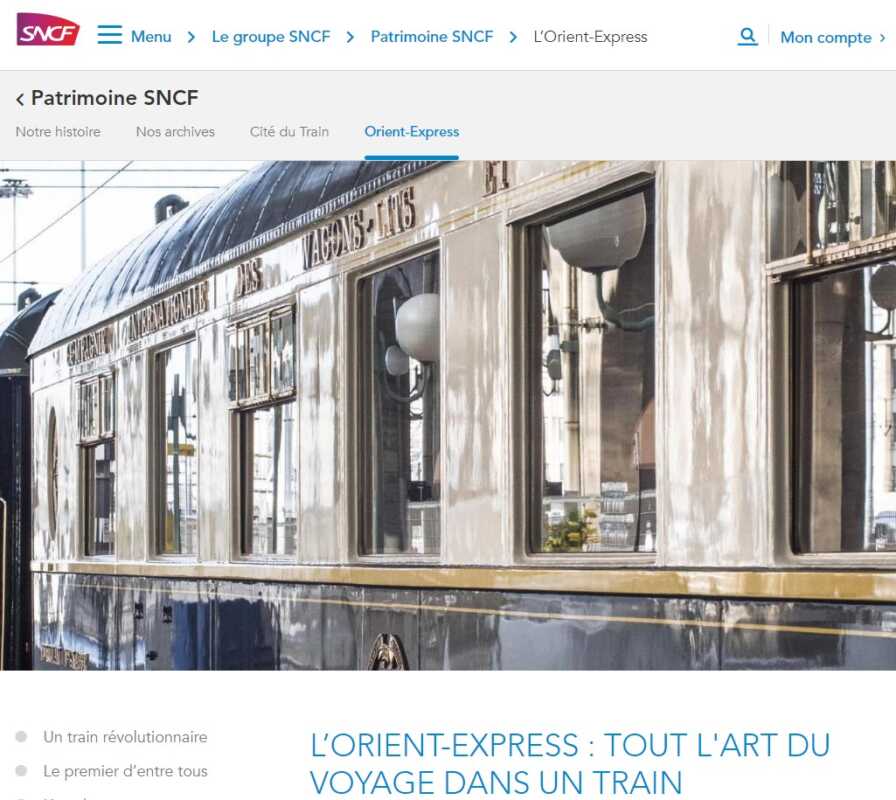
Accor will exploit the Orient Express brand also in luxurious hotels, in two of which, Venice and Rome, it already works. A perfect combination to tour Italy. The jewel in the crown will come into operation a little later.
The Orient Express in Literature and Film
Undoubtedly, the most famous crimes were fictitious crimes and espionage. Agatha Christie published Murder on the Orient Express in 1934. The Istanbul Train, which launched Graham Greene to international fame and also talks about the Orient Express, appeared in 1932.
The most famous movies
Murder on the Orient Express 1974 – on Agatha Christie’s Book – Murder on the Orient Express
Starring
- Albert Finney – Hercule Poirot
- Lauren Bacall
- Martin Balsam
- George Coulouris
- Jean-Pierre Cassel
- Ingrid Bergman
- Jacqueline Bisset
- Sean Connery
- John Gielgud
- Wendy Hiller
- Anthony Perkins
- Vanessa Redgrave
- Rachel Roberts
- Richard Widmark
- Michael York
- Denis Quilley
- Colin Blakely
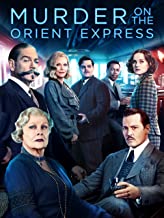
Murder on the Orient Express 2017 – on Agatha Christie’s Book – Murder on the Orient Express
Starring
- Kenneth Branagh – Hercule Poirot
- Tom Bateman
- Penélope Cruz
- Willem Dafoe
- Judi Dench
- Johnny Depp
- Josh Gad
- Leslie Odom Jr.
- Michelle Pfeiffer
- Daisy Ridley
Orient Express – Based on Graham Greene’s novel Stamboul Train,
Starring
- Heather Angel
- Norman Foster
- Ralph Morgan
Orient Express attack
“1931 On the night of September 12, the Orient Express was leaving Budapest and heading west across the Biatorbágy Bridge when a bomb exploded. The locomotive and nine carriages plunged into the abyss: twenty people were killed instantly and many more were seriously injured. Most of the survivors were in a state of silent shock or hysteria when they realized the horror of what had happened and hoped to be rescued. It was then that Josephine Baker (famous African-American singer – ed.) – one of the female passengers who survived the tragedy unscathed – stepped in to help. Now she did not perform an exotic dance, but gave an impromptu rendition of her best-known songs, culminating in her unique anthem for Paris, “J’ai deux amours.”
The quote is taken from Anthony Burton’s book: The History of the Orient Express from 1883 to 1950 – Available from Amazon.com
Related Post
- TSA Medication regulations
- Liquids TSA Rules
- Oregon Scenic Railroad
- Jacobite Train
- Virginia & Truckee Railroad
- Wilmington Western Railroad
- Durango & Silverton Scenic
- Georgetown Loop Railroad







